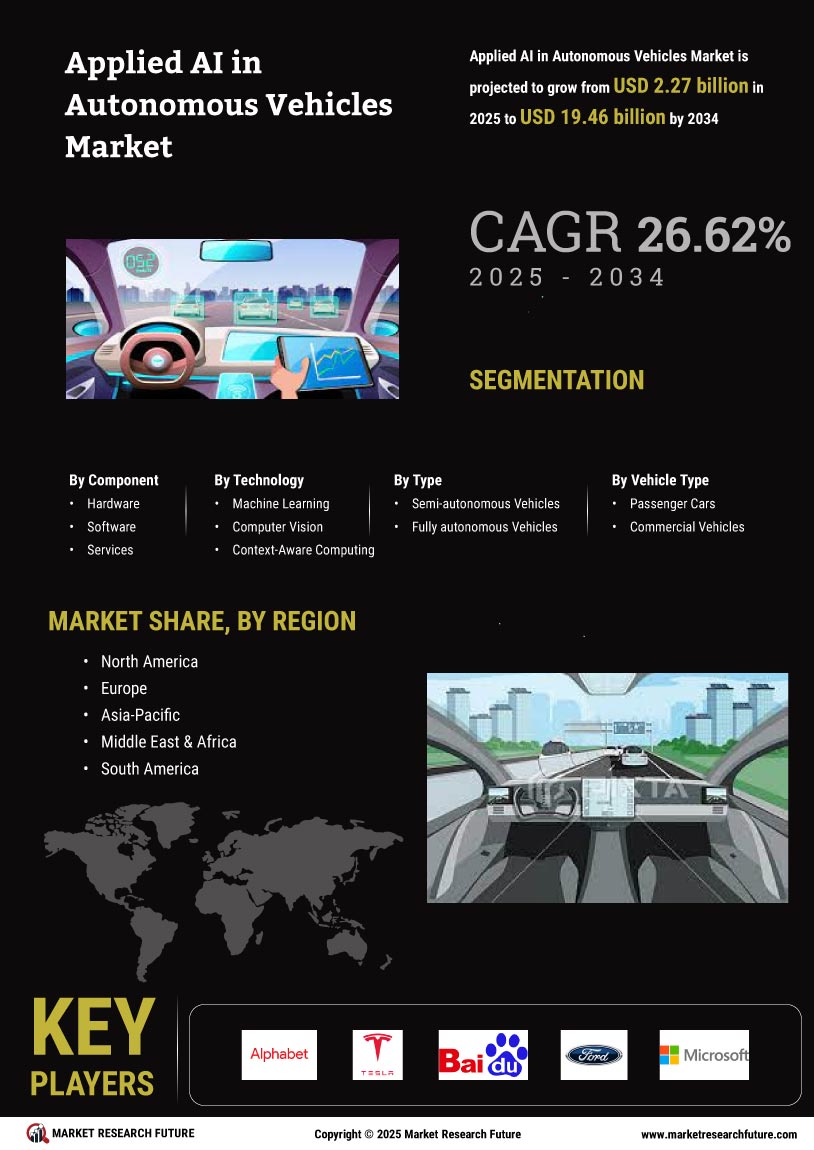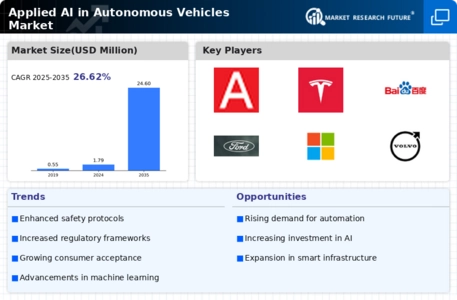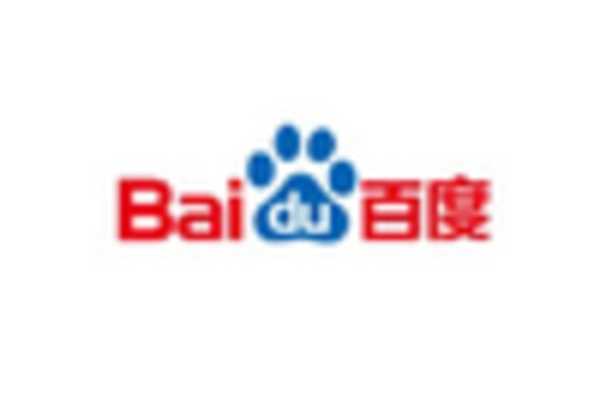Consumer Acceptance and Awareness
Consumer acceptance and awareness are pivotal factors influencing the Applied AI in Autonomous Vehicles Market. As individuals become more informed about the benefits of autonomous driving, including enhanced safety and convenience, their willingness to adopt these technologies is increasing. Surveys indicate that approximately 70% of consumers express interest in using autonomous vehicles, reflecting a growing trust in the technology. This shift in consumer perception is essential for the market's growth, as it encourages manufacturers to invest in applied AI solutions that meet consumer expectations. Moreover, educational campaigns and demonstrations are likely to further enhance public understanding, thereby fostering a more favorable environment for the adoption of autonomous vehicles.
Government Initiatives and Funding
Government initiatives and funding are playing a crucial role in shaping the Applied AI in Autonomous Vehicles Market. Various governments are recognizing the potential of autonomous vehicles to improve transportation efficiency and safety. As a result, they are investing in research and development, as well as creating favorable regulatory environments. For example, funding programs aimed at supporting AI research in transportation have increased by over 40% in the past two years. These initiatives not only foster innovation but also encourage collaboration between public and private sectors, leading to accelerated advancements in applied AI technologies. Consequently, the influx of government support is likely to catalyze growth in the autonomous vehicle market, making it a focal point for future transportation solutions.
Integration of Smart Infrastructure
The integration of smart infrastructure is emerging as a key driver in the Applied AI in Autonomous Vehicles Market. As cities evolve to incorporate smart technologies, the synergy between autonomous vehicles and intelligent infrastructure becomes increasingly apparent. This integration facilitates improved communication between vehicles and traffic management systems, enhancing overall traffic flow and safety. For instance, smart traffic signals can adapt in real-time to vehicle movements, potentially reducing congestion by up to 25%. As urban areas continue to develop smart infrastructure, the demand for applied AI solutions in autonomous vehicles is expected to rise, creating new opportunities for innovation and collaboration within the automotive sector.
Advancements in Machine Learning Algorithms
The Applied AI in Autonomous Vehicles Market is significantly influenced by advancements in machine learning algorithms. These algorithms are crucial for enabling vehicles to process vast amounts of data from various sensors and make real-time decisions. Recent developments in deep learning and neural networks have improved the accuracy and reliability of autonomous systems. For instance, the implementation of advanced perception algorithms has led to a 30% increase in object detection accuracy, which is vital for safe navigation. As these technologies continue to evolve, they are expected to enhance the capabilities of autonomous vehicles, making them more appealing to consumers and businesses alike. This, in turn, is likely to drive further investment in the applied AI sector within the automotive industry.
Rising Demand for Autonomous Mobility Solutions
The Applied AI in Autonomous Vehicles Market is experiencing a notable surge in demand for autonomous mobility solutions. This trend is driven by the increasing need for efficient transportation systems that can alleviate urban congestion and enhance road safety. According to recent data, the market for autonomous vehicles is projected to reach USD 60 billion by 2030, indicating a robust growth trajectory. As consumers become more aware of the benefits of autonomous driving, including reduced travel times and lower accident rates, the adoption of these technologies is likely to accelerate. Furthermore, the integration of applied AI technologies is expected to play a pivotal role in optimizing vehicle performance and enhancing user experience, thereby solidifying the market's expansion.


















Leave a Comment